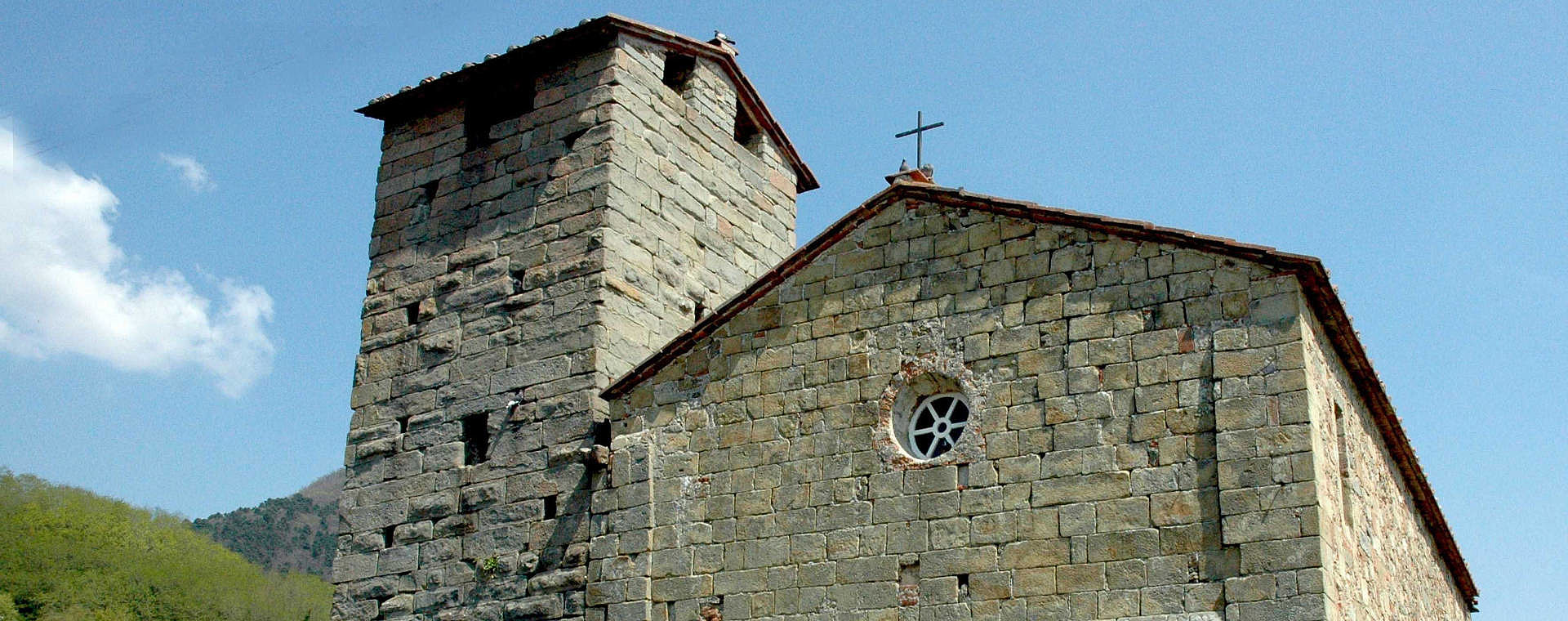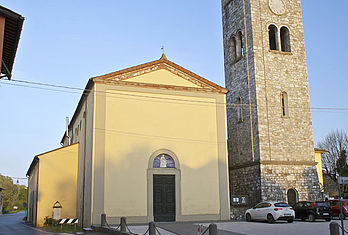Saint Vincent's Church - Verciano
First documentations: 1260
History and architecture
The village of "Versiciano" is often mentioned in documents of the Middle Ages. Originally it had four churches: Saint Vincenzo, registered as parish in an Esteem of 1260 and dedicated to Saint Vincenzo the martyr, deacon of the Cathedral of Saragozza and murdered during the bloody persecution of Diocleziano (294-304); Saint Michael, located in Vergalloro and probably the oldest, to which was annexed a hospital; Saint Lorence, located in Cantieri, place of worship for the presence of a Crucifix; Saint Stephan, then annexed to Saint Vincenzo and mentioned in the "Esteem" of 1260 as part of the parish of Saints John and Reparata.
This one preserves its medieval features, according to the documents that mention it (1123-1139), while Saint Vincenzo's was restored many times as a consequence of the importance that it had assumed in comparison to the other churches.
In 1516, the Pope Leone X, through a Bull preserved in the archives of the church, raised the church of Saint Vincenzo to the rank of Parish.
In that period the building had a nave and was enlarged, as witnessed by a seventeenth-century gravestone. The most important modification was made in the XIX century, after the suppression of the parish of Saint Stephan and, therefore, the need of an ambient that could host all the worshippers. A field next to the church was bought in order to make possible the enlargement and every family of Verciano paid a tax to contribute to the expenses. The new structure, portrayed by Giuseppe Matraia in that same century, is entirely preserved. The works, that began in 1835 and ended in 1854, had to do with the enlargement and the division of the presbitery and of the chorus through the insertion of a wedge sustained by two columns. The church gained in width and assumed a solemn aspect.
The present bell tower was rebuilt between 1949 and 1950, while the basement of the original structure that rised on the left side of the church has been annexed to another building. The original bell tower was made of stone and had a guelfic crenellation.
Works of art
Of great value are the works of art that we can admire in the church.
After the end of the works of restoration, two marble altars of the nunnery of Saint Geroge (then passed to the city of Lucca and was transformed into a prison) were added.
Along with the altars, two paintings were given to the church: a "Virgin with Rosary" of Pier Dandini and "The Last Supper" of Banduccio Trenta. The church was ornated with frescos by Marcucci between 1924 and 1925 and by Bianchi in 1955.
Originally the church did not have a baptesimal font (only the parish could have one) but a villager, Ernesto Cantieri, ordered the construction of a baptesimal font to the sculptor Antonio Meschi. The font was solemnly inaugurated in 1933.
Bibliography
D. Fontana, "Verciano: storia di una comunità", Lucca, 1987.

